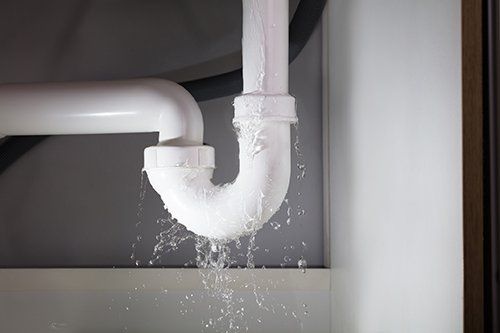Just how do you feel about Most Common Causes of Leaky Pipes?

Leaks not only cause waste of water but can also cause unnecessary damages to your residence and also advertise undesirable organic growth. Sadly, water leaks might go unnoticed given that most of the pipework in our house is concealed. By looking as well as recognizing for daily situations that create leakages, you can safeguard your residence from future leakages and unnecessary damages. Today, we will check out six leak triggers that might be triggering your pipelines to drip.
Instant temperature level adjustments.
Severe temperature changes in our pipelines can cause them to increase and also get all of a sudden. This development as well as tightening may cause splits in the pipes, specifically if the temperature level are below freezing. If you kept an eye on just how your plumbing functions, it would be best. The visibility of the previously mentioned conditions often shows a high danger.
Rusty water supply
As time passes by, your plumbing system ages and rust such as rust may start eating away the pipelines. This could be the source of staining or bending on your pipes. This calls for an assessment with your plumber promptly. If our plumbing system is old, consider changing the pipelines given that they are at a higher danger of corrosion than the newer models.
Faulty Pipeline Joints
Pipeline joints can deteriorate over time, resulting in water leaks. If you have noisy pipelines that make ticking or banging sounds, specifically when the warm water is turned on, your pipeline joints are probably under a great deal of stress.
Trespassing roots
The majority of water leaks start outside the home rather than inside it. You could notice wet spots or sinkholes in your backyard, and that might mean that tree origins are getting into water lines creating water to leak out.
Poor Water Connectors
At times, a leakage can be caused by loosened hose pipes and also pipes that supply your home appliances. More often than not, moving is what causes the loose water Connections. You could locate in the case of a cleaning maker, a hose might spring a leakage as a result of drinking throughout the spin cycle. In case of a water connections leak, you may discover water running directly from the supply line or pools around your home appliances.
Clogged Drains
Blocked drains pipes may be irritating as well as inconveniencing, yet they can in some cases wind up creating an overflow resulting in rupture pipelines. Maintain getting rid of any type of products that might drop your drains pipes that could block them to avoid such troubles.
All the above are root causes of leakages but not all water leakages result from plumbing leakages; some leaks may come from roofing leaks. All leakages must be fixed instantly to avoid water damage.
Leakages not only create waste of water but can also create unneeded damages to your home as well as advertise unwanted organic growth. By looking and recognizing for day-to-day scenarios that create leakages, you can secure your house from future leakages and unnecessary damage. Today, we will look at six leakage creates that may be creating your pipes to leak.
At times, a leak can be caused by loose hose pipes and also pipelines that provide your home appliances. In instance of a water connections leak, you may observe water running directly from the supply line or puddles around your home appliances.
How To Check For Water Leak In Your Home
How To Check for Leaks
The average household's leaks can account for nearly 10,000 gallons of water wasted every year and ten percent of homes have leaks that waste 90 gallons or more per day. Common types of leaks found in the home are worn toilet flappers, dripping faucets, and other leaking valves. These types of leaks are often easy to fix, requiring only a few tools and hardware that can pay for themselves in water savings. Fixing easily corrected household water leaks can save homeowners about 10 percent on their water bills.
To check for leaks in your home, you first need to determine whether you're wasting water and then identify the source of the leak. Here are some tips for finding leaks:
Take a look at your water usage during a colder month, such as January or February. If a family of four exceeds 12,000 gallons per month, there are serious leaks.
Check your water meter before and after a two-hour period when no water is being used. If the meter changes at all, you probably have a leak.
Identify toilet leaks by placing a drop of food coloring in the toilet tank. If any color shows up in the bowl after 10 minutes, you have a leak. (Be sure to flush immediately after the experiment to avoid staining the tank.)
Examine faucet gaskets and pipe fittings for any water on the outside of the pipe to check for surface leaks.
Undetected water leaks can happen without the home or business owner even realizing. If you suspect a water leak, but not able to find the source. It is time to contact a professional water leak detection service, The Leak Doctor.
How To Find a Water Leak In Your Home
https://www.leakdoctor.com/blog/How-To-Check-For-Water-Leak-In-Your-Home_AE197.html

I stumbled upon that piece of writing on Common Water Leaks In House while surfing the internet. Loved our content? Please share it. Let others check it out. Thank you for taking the time to read it.
Professional touch for plumbing woes.